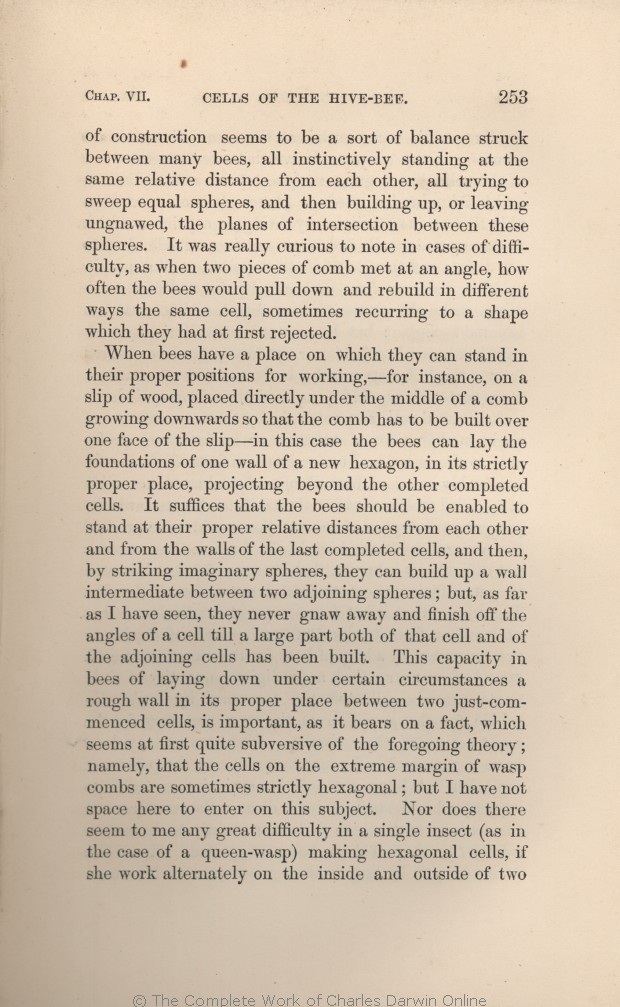of construction seems to be a sort of balance struck between many bees, all instinctively standing at the same relative distance from each other, all trying to sweep equal spheres, and then building up, or leaving ungnawed, the planes of intersection between these spheres. It was really curious to note in cases of difficulty, as when two pieces of comb met at an angle, how often the bees would
..| ..... 1860 1861 1866 1869 1872 | | entirely 1859 |
|
|
When bees have a place on which they can stand in their proper positions for working,— for instance, on a slip of wood, placed directly under the middle of a comb growing
downwards | downwards 1859 1860 1861 1866 1869 | | downwards, 1872 |
| just-commenced 1860 1861 1866 1869 1872 | | just-com- menced 1859 |
| quite 1859 1860 1861 1866 1869 | quite 1872 |
| wasp combs 1861 | | wasp-combs 1859 1860 1869 1872 | | waspcombs 1866 |
| work 1859 1860 1861 |
| were to work 1866 1869 1872 |
|









